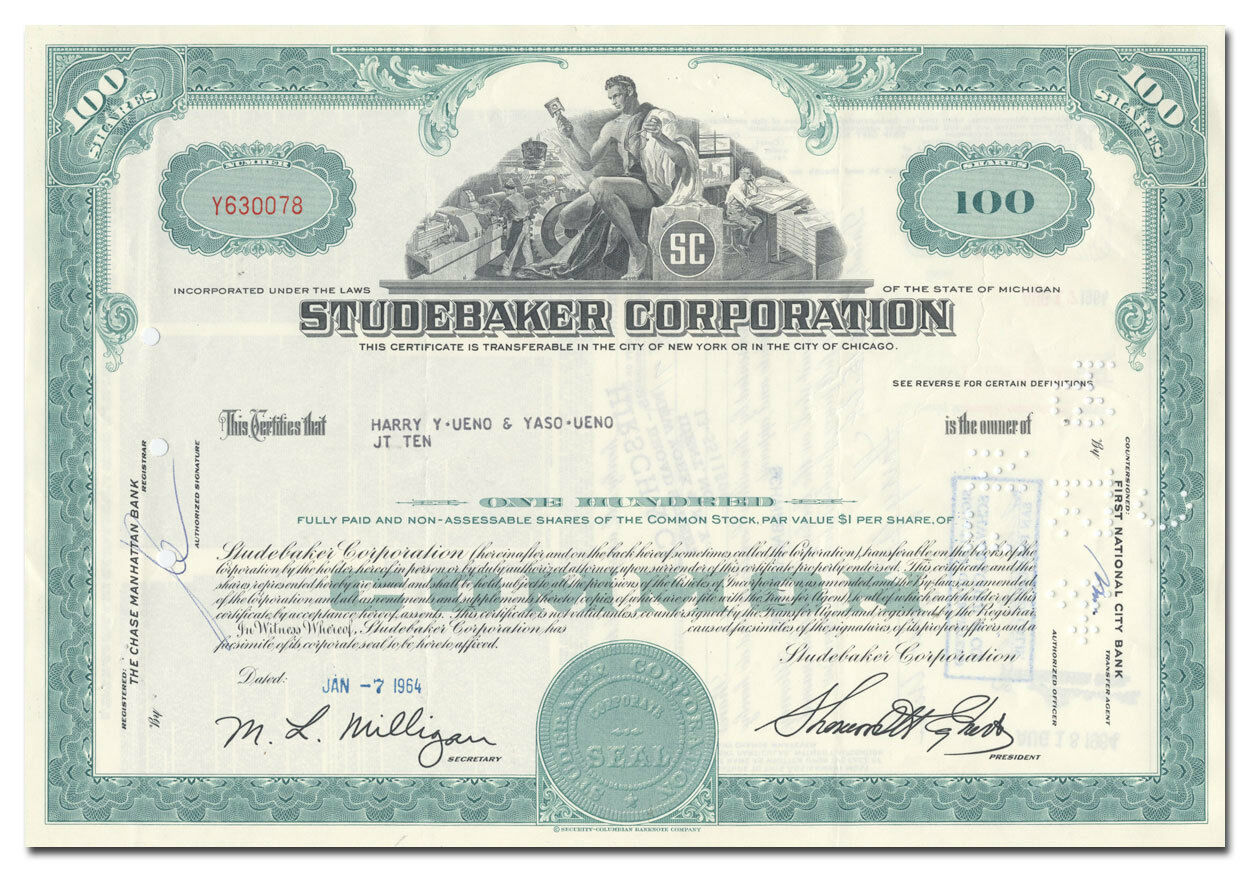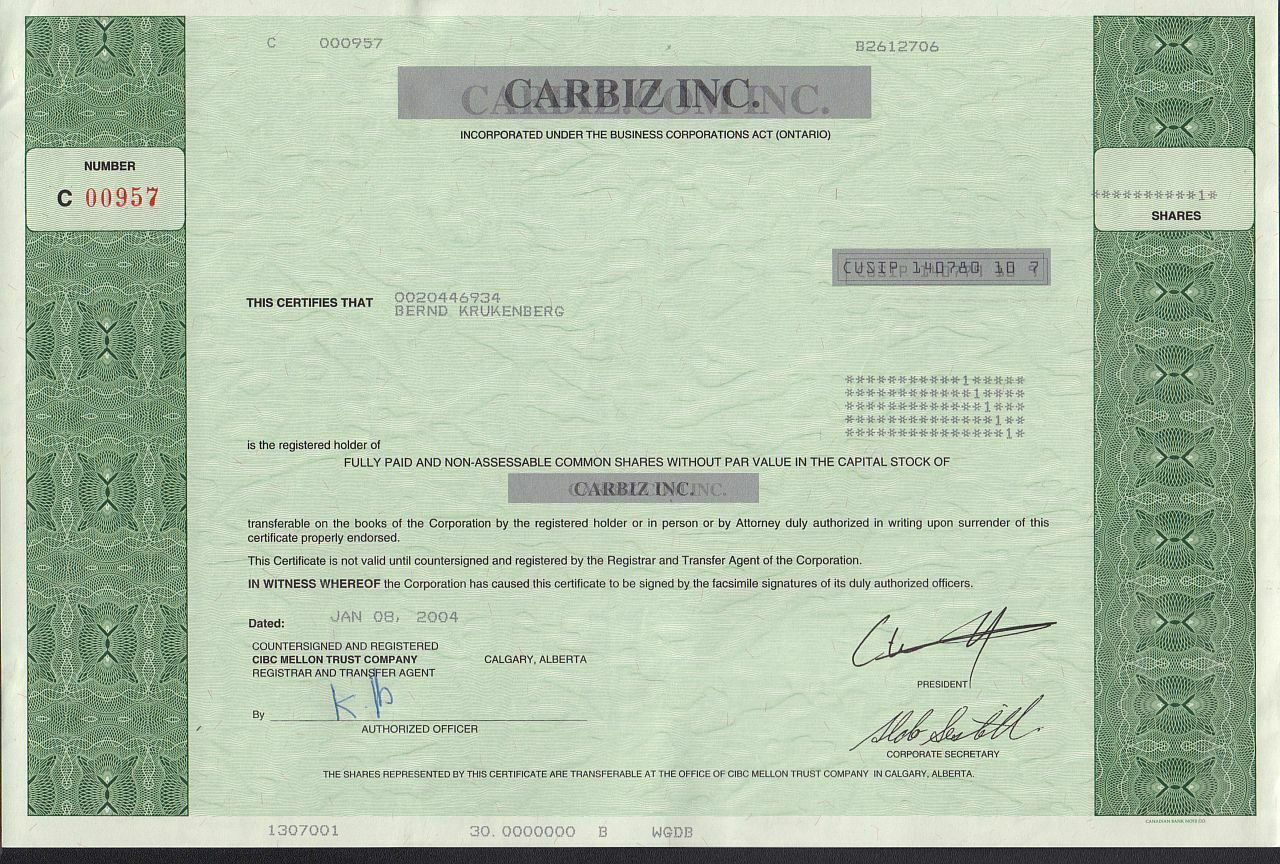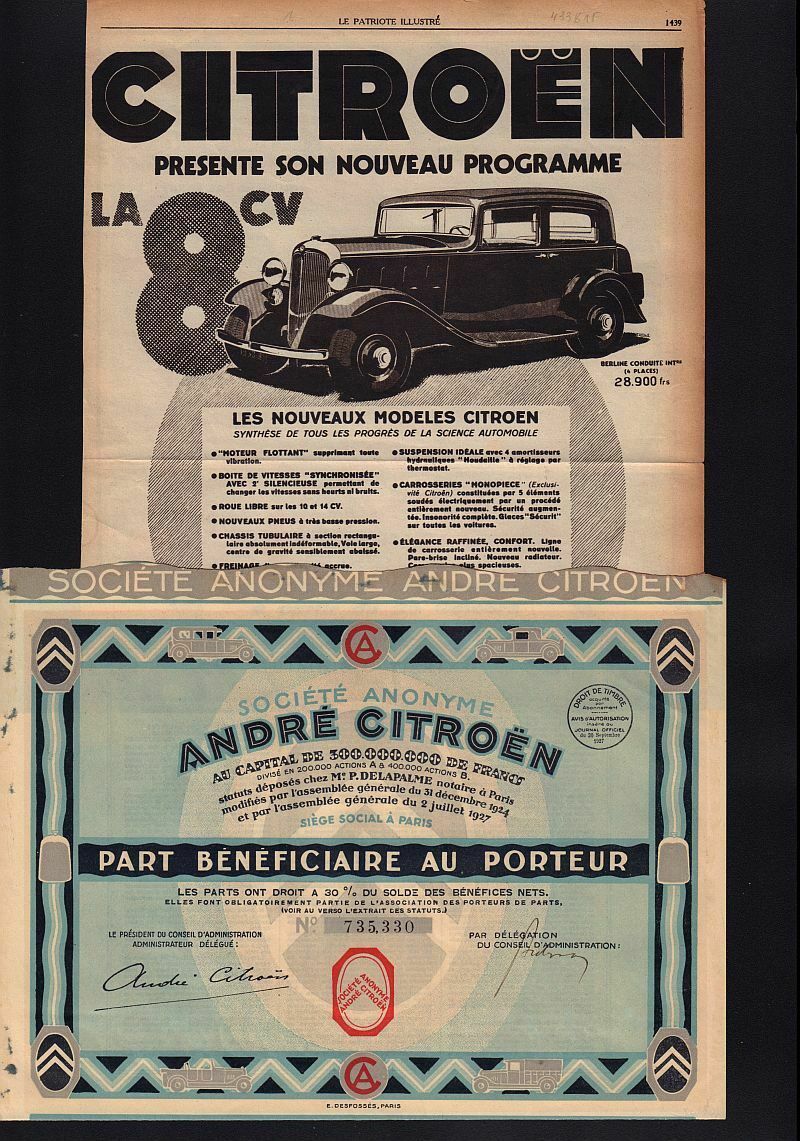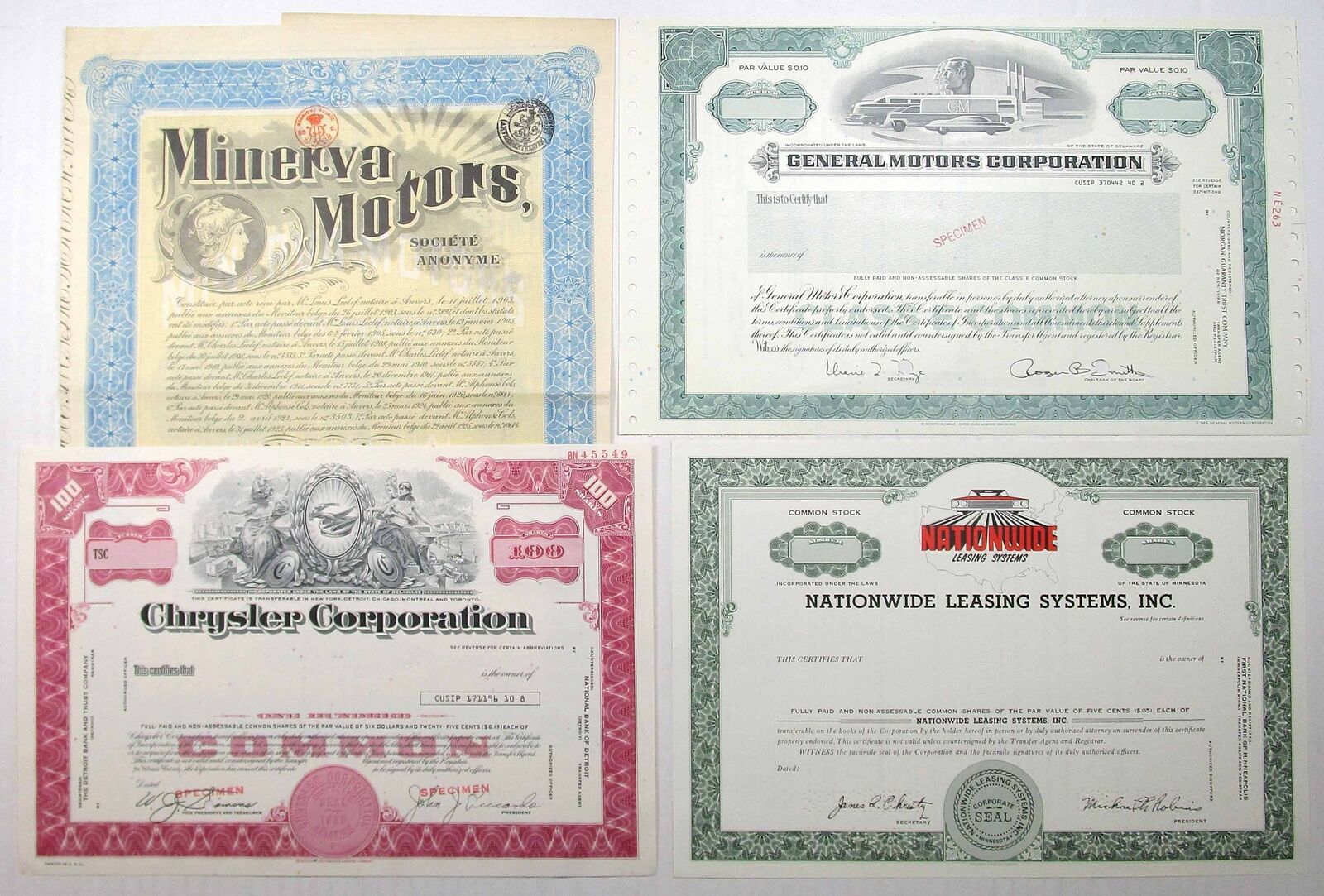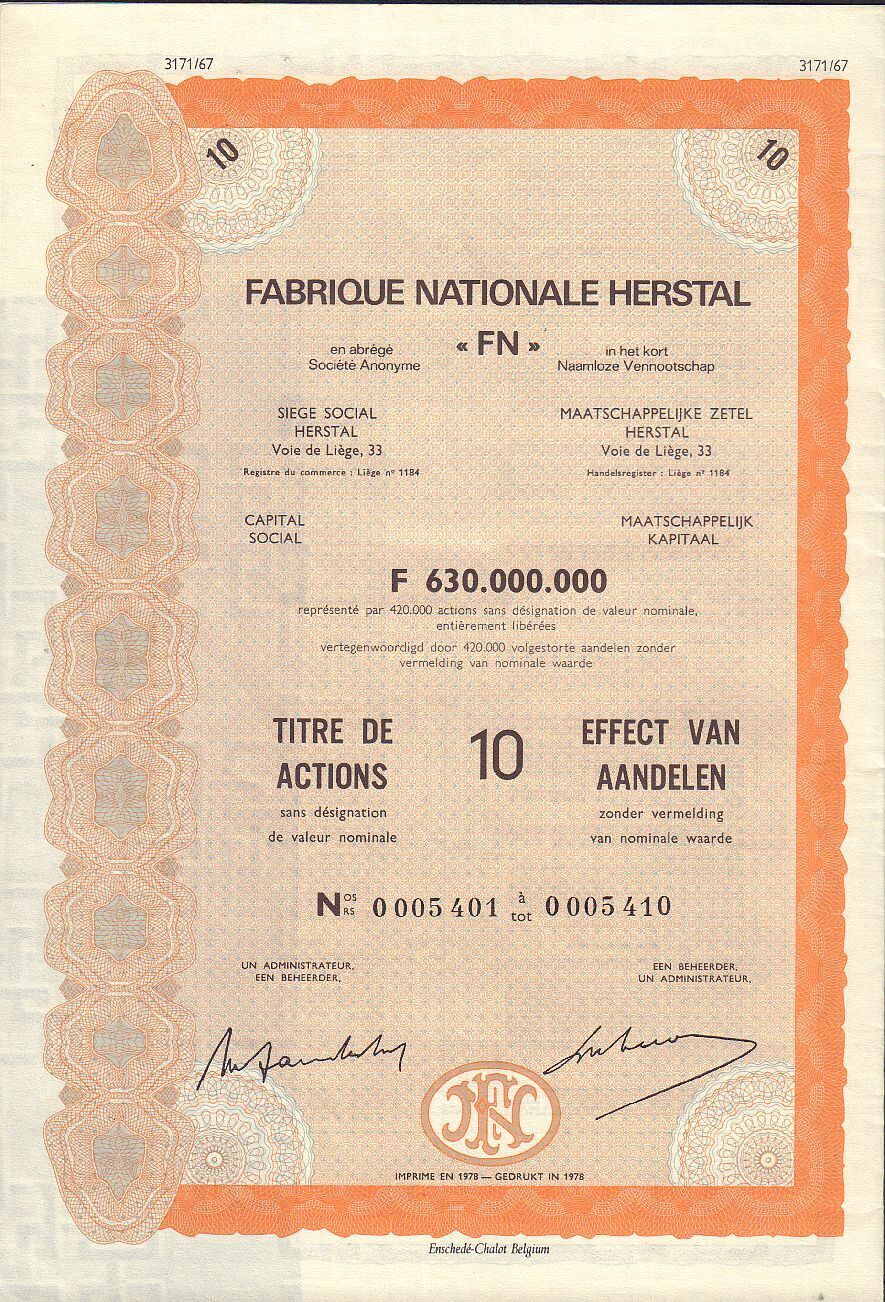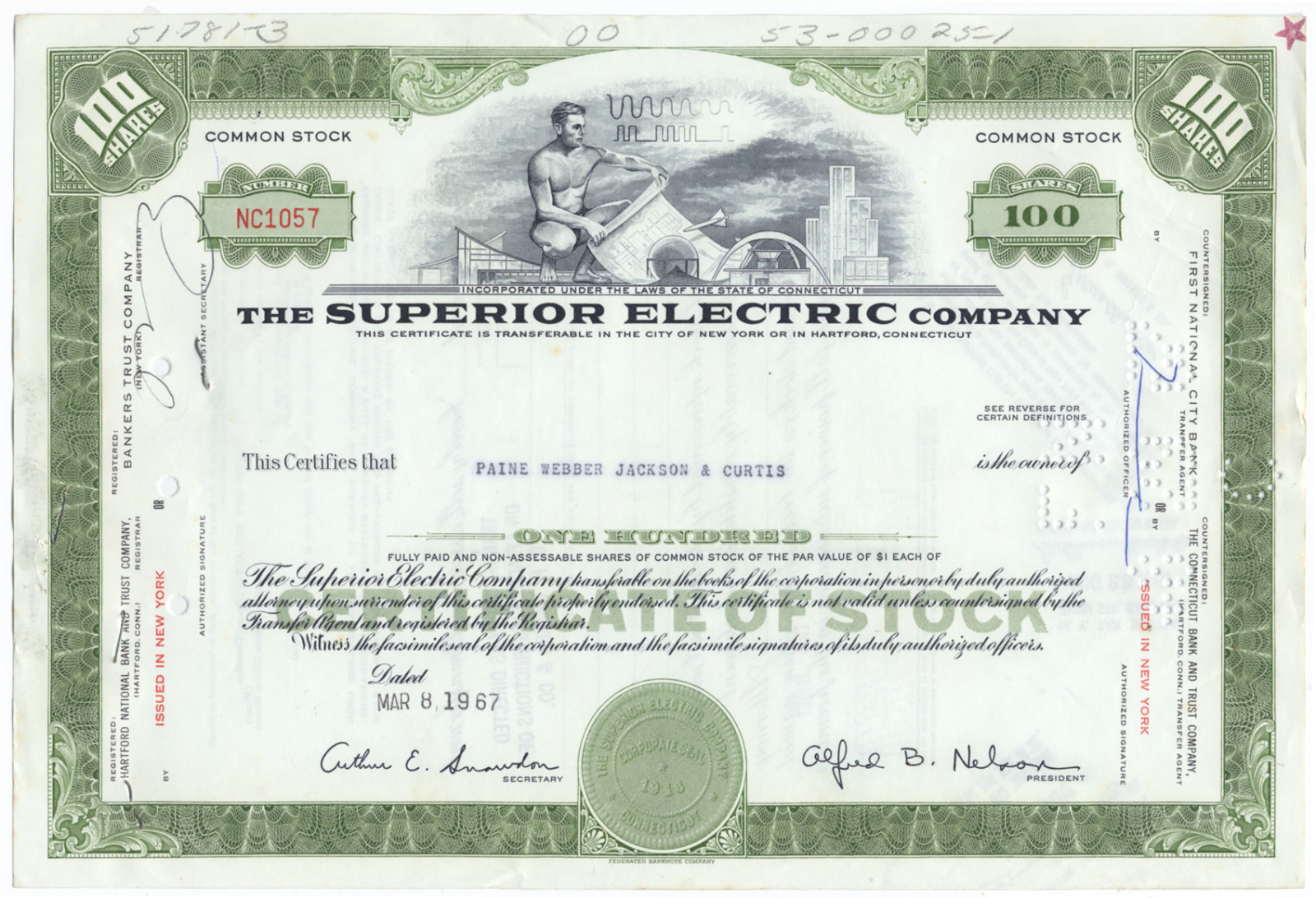-40%
Studebaker Corporation Stock Certificate
$ 2.64
- Description
- Size Guide
Description
Product DetailsIntricately engraved antique stock certificate from the Studebaker Corporation dating back to the 1960's. This document, which was printed by the Security-Columbian Bank Note Company, carries the printed signatures of the company President and Secretary and measures approximately 12" (w) by 8" (h).
The vignette features a male figure holding a piston, behind him is a manufacturing scene to the left and a man at a drafting table to the right.
Images
The images presented are representative of the piece(s) you will receive. When representative images are presented for one of our offerings, you will receive a certificate in similar condition as the one pictured; however dating, denomination, certificate number and issuance details may vary.
Historical Context
Studebaker Corporation was based in South Bend, Indiana. Originally, the company was a producer of industrial mining wagons, founded in 1852 and incorporated in 1868 under the name of the Studebaker Brothers Manufacturing Company. While Studebaker entered the automotive business in 1902 with electric vehicles and 1904 with gasoline vehicles, it partnered with other builders of gasoline-powered vehicles until 1911. In 1913, Studebaker introduced the first gasoline-powered automobiles under its own “Studebaker” brand name. Acquired in 1954 by Packard Motors Company of Detroit, Michigan, Studebaker was a division of the Studebaker Packard Corporation from 1954 to 1962. In 1962, it reverted to its previous name, the Studebaker Corporation. While the company left the automobile business in 1966, Studebaker survived as an independent closed investment firm until 1967 when it merged with Worthington to become Studebaker-Worthington Corporation.
19th Century Wagon Maker
Henry Studebaker was a farmer, blacksmith, and wagon-maker who lived near Gettysburg, Pennsylvania in the early 19th century. By 1860, he had moved to Ashland, Ohio and taught his five sons to make wagons. They all went into that business as they grew westward with the country. Clement and Henry, Jr. Studebaker became blacksmiths and foundrymen in South Bend. They first made metal parts for freight wagons and later expanded into the manufacture of wagons. John made wheelbarrows in Placerville, California, and Peter made wagons in Saint Joseph. The first major expansion in their business came from their being in place to meet the needs of the California Gold Rush in 1849.
When the gold rush settled down, John returned to Indiana and bought out Henry's share of the business. They brought in their youngest brother Jacob in 1852. Expansion continued to support westward migration, but the next major decrease came from supplying wagons for the Union Army in the Civil War. After the war, they reviewed what they had accomplished and set a direction for the company.
They reorganized into the Studebaker Brothers Manufacturing Company in 1878, built around the motto of "Always give more than you promise." By this time the railroad and steamship companies had become the big freight movers in the east. So they set their sights on supplying individuals and farmers the ability to move themselves and their goods. Peter's business became a branch operation.
During the height of Westward migration and wagon train pioneering, all of the wagons were Studebakers. They made about half of them, and manufactured the brass fittings to sell to other builders in Connecticut for another quarter.
Studebaker Automobiles
Studebaker experimented with powered vehicles as early as 1897, choosing electric over gasoline engines. While it attempted to manufacture its own electric vehicles from 1902 to 1912, the company entered into a distribution agreement with two manufacturers of gasoline powered vehicles namely Garford of Elyria, Ohio, and the Everett-Metzger-Flanders (E-M-F) Company of Detroit.
Under the agreement with Studebaker, Garford would receive completed chassis and drivetrains from Ohio and then mate them with Studebaker built bodies which were sold under the Studebaker-Garford brand name and at a premium price. Eventually, even the Garford built engines began to carry the Studebaker name. However, Garford also built a limited number of cars under its own name, and by 1907, attempted to increase their production at the expense of Studebaker. Once Studebaker discovered what was going on with their partner, John Moehler Studebaker enforced their primacy clause, forcing Garford back onto the scheduled production quotas. The decision to drop the Garford was made and the final product rolled off of the assembly line by 1911, leaving Garford to try it alone until it was acquired by John North Willys in 1913.
Studebaker's marketing agreement with E-M-F was a different relationship, one that John Studebaker had hoped would give Studebaker a quality product, without the entanglements found in the Garford relationship.
